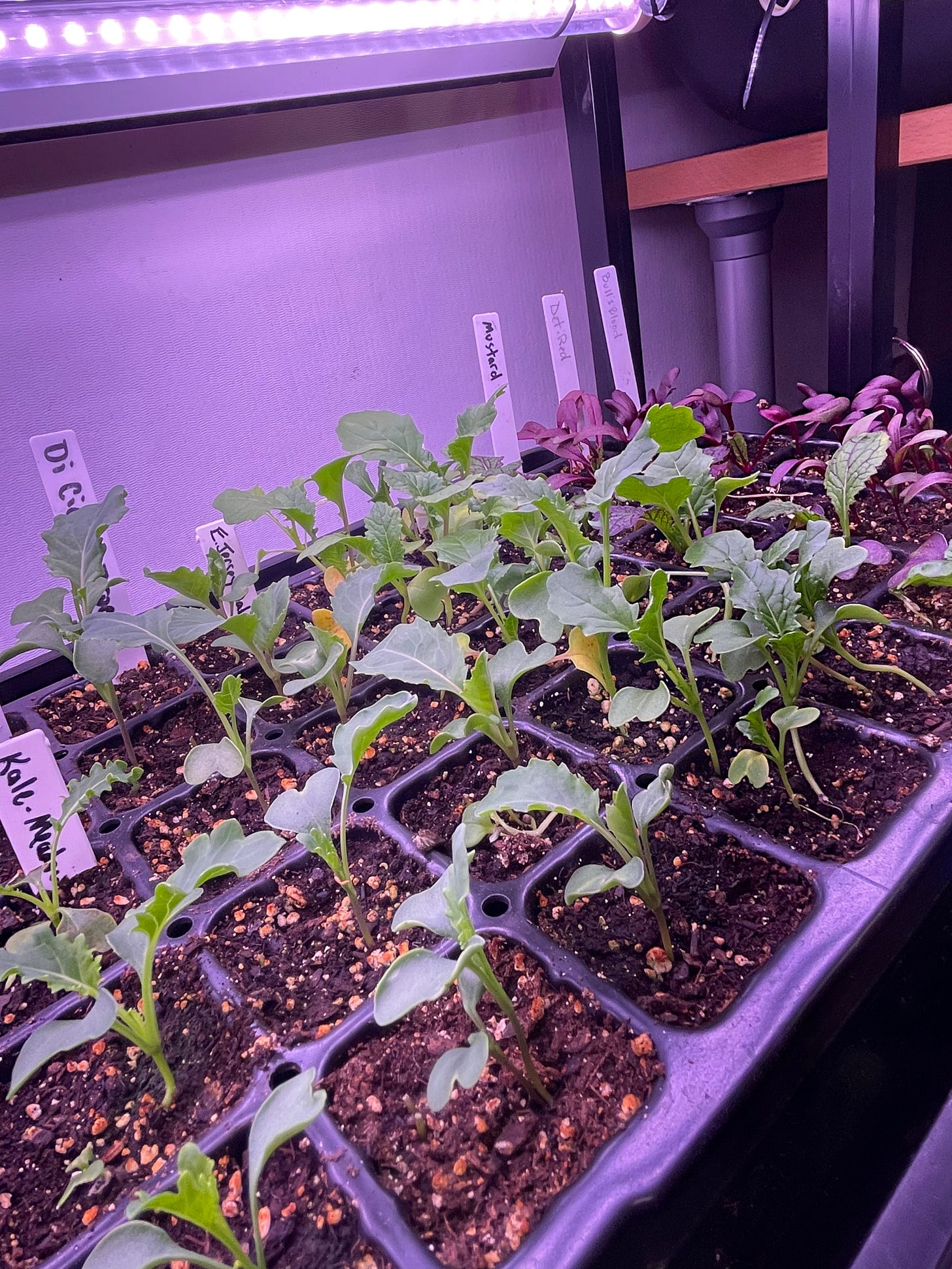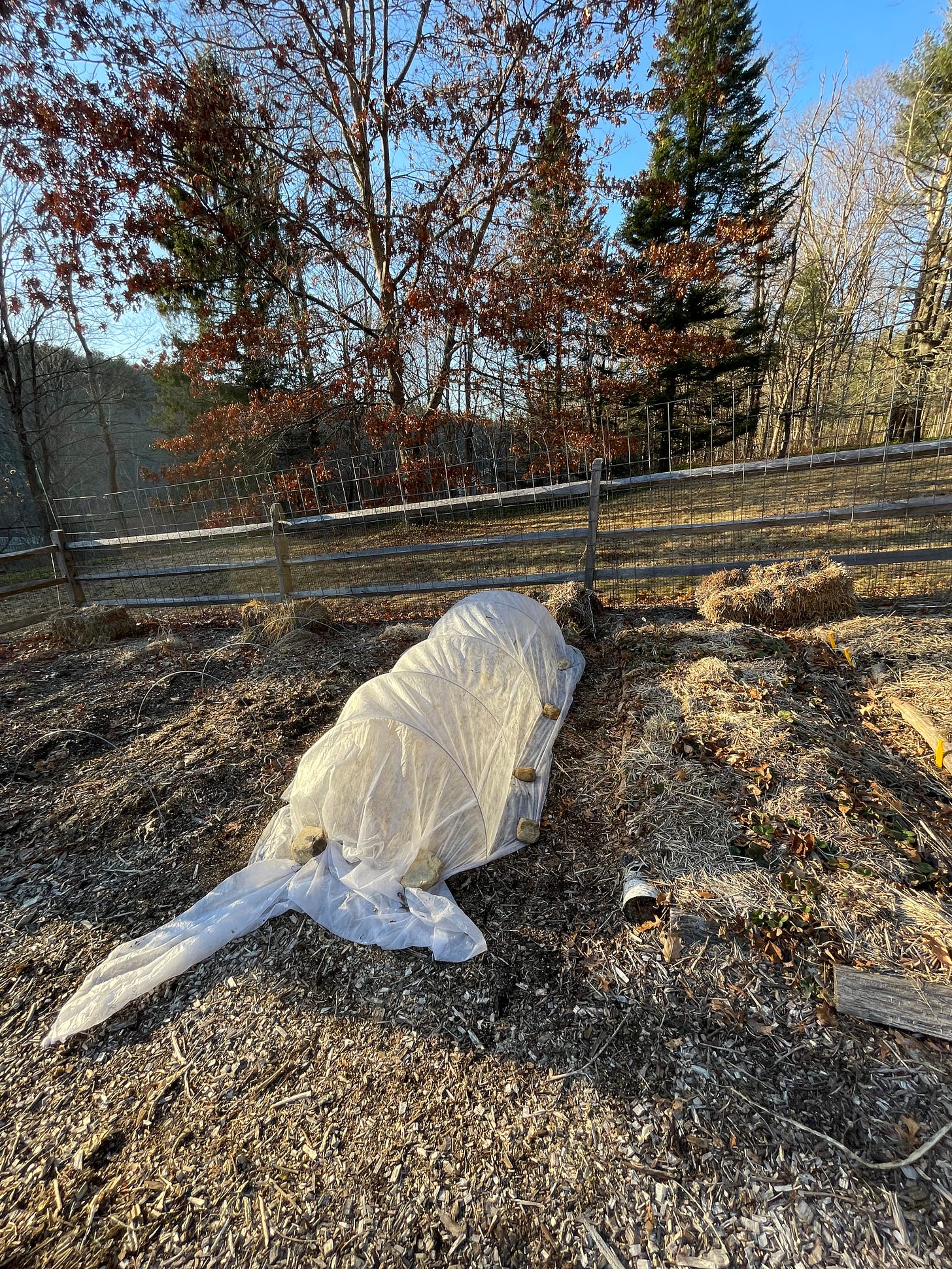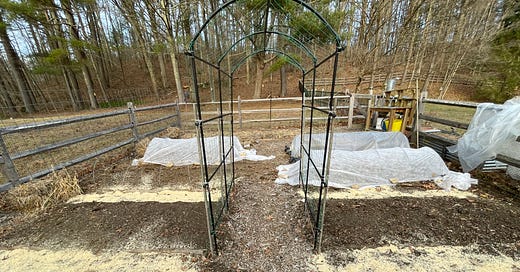What’s happening in the garden this week: March 16-22
The spring cleanup begins, and the first vegetables go into the garden under cover.

Garden cleanup
We’ve been leaving the leaves in place in the perennial borders around the house out of respect for all the insects and other creatures still wintering over in them. We’ve also left most of the stalks from the perennial flowers standing as they can be hosts for native bees. We’ll wait until daytime temperatures consistently reach into the 50s to do a full cleanup, which for us is still several weeks away.
All that said, we did rake the leaves and the remains of some spent plants from areas where we know spring ephemerals will soon or already are sticking out of the ground. It’s a tradeoff, but there are enormous areas around our property loaded with fallen leaves, which is plenty for all those helpful bugs.
I did spend some time tidying up the vegetable garden. There were leaves blown into the area over the past several months, plus some spent plants and other debris in the beds themselves. I lightly raked the beds, being careful not to disturb the soil too much. I spread compost on all of them late summer and the soil looks to be in great shape.
I spread some sawdust a neighbor had given me last summer in a few of the pathways just to add a little mulch. It will darken in the weeks ahead. I also dug up those few weeds showing up in the beds and paths, but there weren’t many – at least yet.
I haven’t touched the asparagus or strawberry beds. They’re both still covered with straw that I spread over them as a mulch late last fall and I’ll leave it in place for a while longer. I spread a thin layer of wood ash from the fireplace on the asparagus bed to raise the soil pH a bit, and I’ll fertilize both beds soon.
Garlic emerges
It was week later than a year ago, but the first green shoots of our garlic have come out of the ground over the past few days. Last year I noticed the garlic on March 12. This year it was March 18. I’m pretty sure the much colder winter this year is the reason for the difference.
[Growing garlic is a leap of faith.]
Some vegetables planted
I planted spinach and arugula seedlings that I started indoors in a couple of the beds with insulating row covers over them. I also direct-seeded some additional arugula as well as mache seeds. I haven’t grown mache in years, and the seeds are a couple years old, so we’ll see how well they germinate. If it germinates, mache is a delicious early-season addition to salads and can be planted in fall as well. It doesn’t like the heat. I also planted about 20 broccoli raab seedlings in one of the covered beds. I’ll start another dozen or so broccoli raab seedlings indoors soon for a second planting next month. I already have some spinach seedlings growing for planting in the ground in a few weeks. Succession sowing like this extends the season for cold-tolerant vegetables. I’ll likely plant lettuce seedlings I started about four weeks ago indoors in the garden soon, as long as the weather permits. I’m starting more lettuce soon so it can be ready to go out into the garden in April.

I have three beds under row covers, and the seedlings have been doing fine even though temperatures at night have been falling into the high 20s. The real challenge is daytime, when the sun is out and it’s in the 50s and low 60s, as it was a couple days this week. Then I have to make sure to peel back the row covers during the day because the temperature underneath them gets too hot. It’s a balancing act and forces me to keep reminding myself whether the covers are on or off. We’re supposed to get a cold snap this weekend so, covers on.

Raspberries pruned
I pruned our patch of raspberries. These are an “everbearing” variety, which means you get two harvests per season – a smaller one in late spring/early summer and a second, larger one in late summer. For spring pruning, that means removing all the dead canes, cutting them to the ground, and pruning the canes that have spent flowers at the tips down about 12-18 inches to a bud. The early raspberries will grow from these canes before the canes die off, while brand new canes will emerge from the ground to host the second raspberry crop late in the summer. Those will be the canes pruned next spring. It’s an amazing little cycle. I’ll fertilize the patch next week.
Here’s a selection of other recent posts:
Saving a bird. Save the birds.



